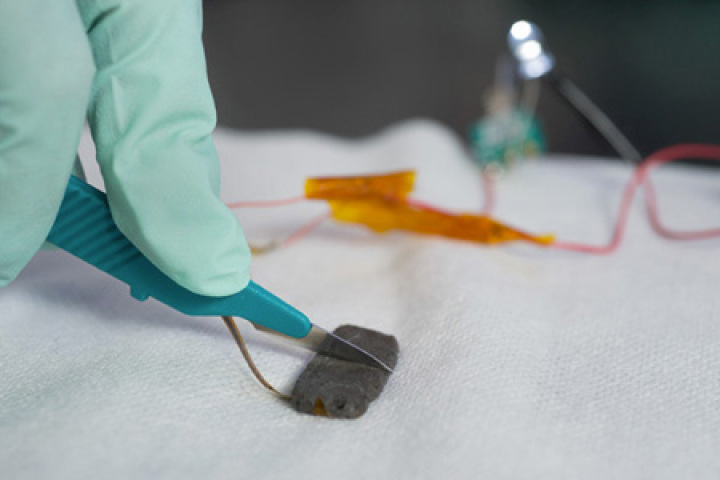A self-healing and sensitive plastic

Tired of nicking yourself with the kitchen knife and cursing paper cuts? A new development from Stanford University could mean the end of bloody band-aids and unsightly scars. Stanford chemical engineering Professor Zhenan Bao and her team have created the first synthetic material that could act as a working substitute for our own, amazing epidermis.
Created by the clever minds at Stanford University’s Department of Electrical Engineering, the material is made from both plastic and metal. Not only does it mimic our natural skin’s sensitivity to touch, it’s also capable of healing itself quickly and repeatedly at room temperature – something that previous prototypes weren’t able to do.
In order to conjure up this miraculous material, Stanford researchers combined the self-healing ability of a plastic polymer and the conductivity of a metal. Most plastics are good insulators, but when a plastic consisting of long chains of molecules joined by hydrogen bonds was combined with tiny particles of nickel, the result was a taffy-like polymer with the ability to conduct electrical energy.
They took a thin strip of the material and cut it in half with a scalpel. After gently pressing the pieces together for a few seconds, the researchers found the material gained back 75 percent of its original strength and electrical conductivity. The material was restored close to 100 percent in about 30 minutes. That’s faster than real skin!
Researchers say the applications for this futuristic skin are many. For example, if the material were to cover electronic devices such as phones and tablets, they might be made impervious to scratches or nicks, and could be programmed to inform their owners if more severe damage was present. It’s also hoped that this artificial skin could improve the function of prosthetic limbs, healing external damage on their own.
More information
http://news.stanford.edu/news/2012/november/healing-plastic-skin-111112.html





